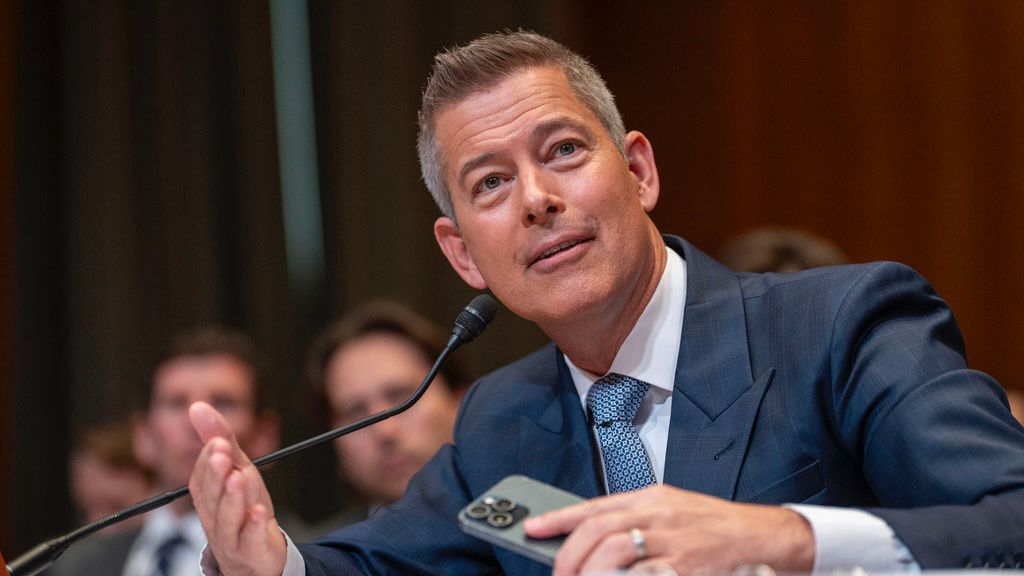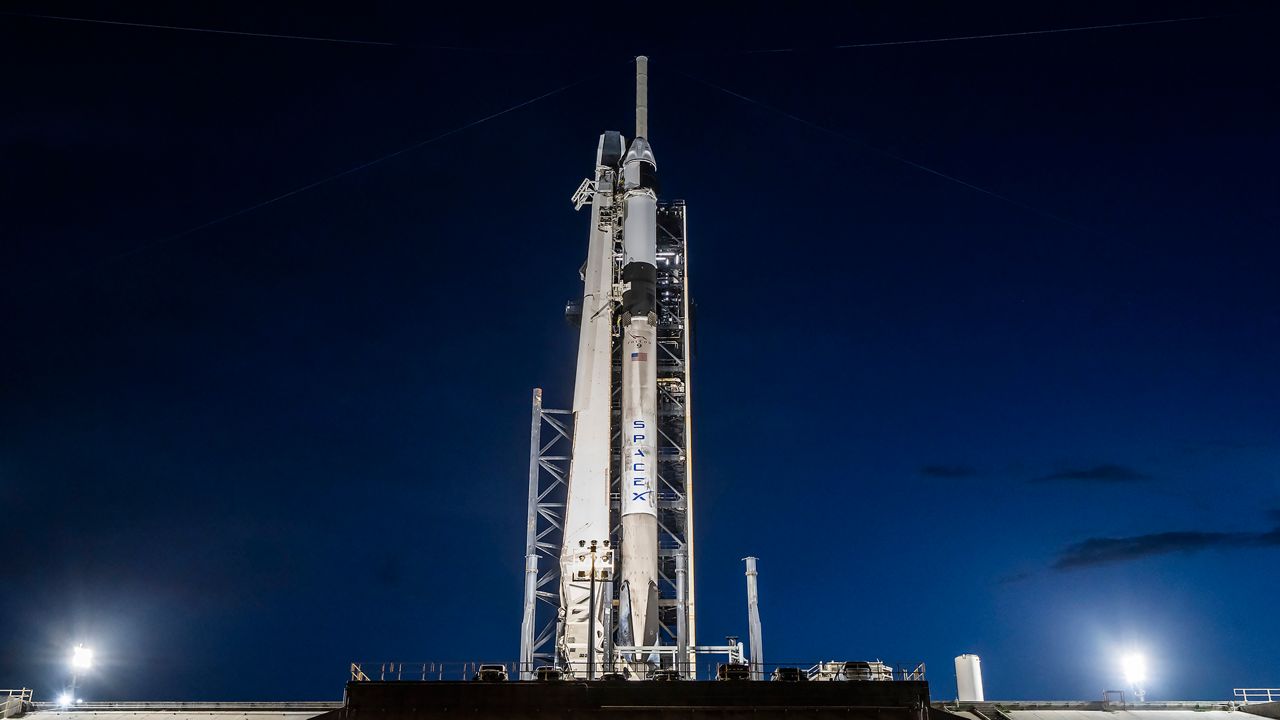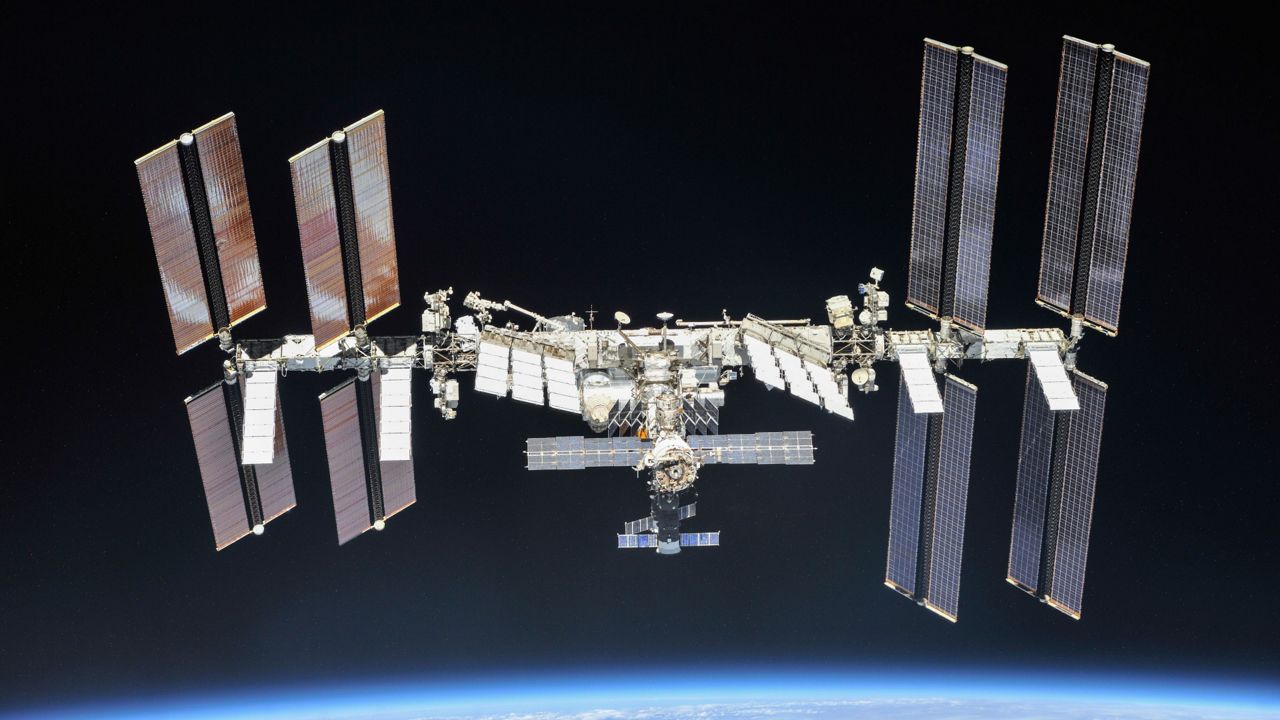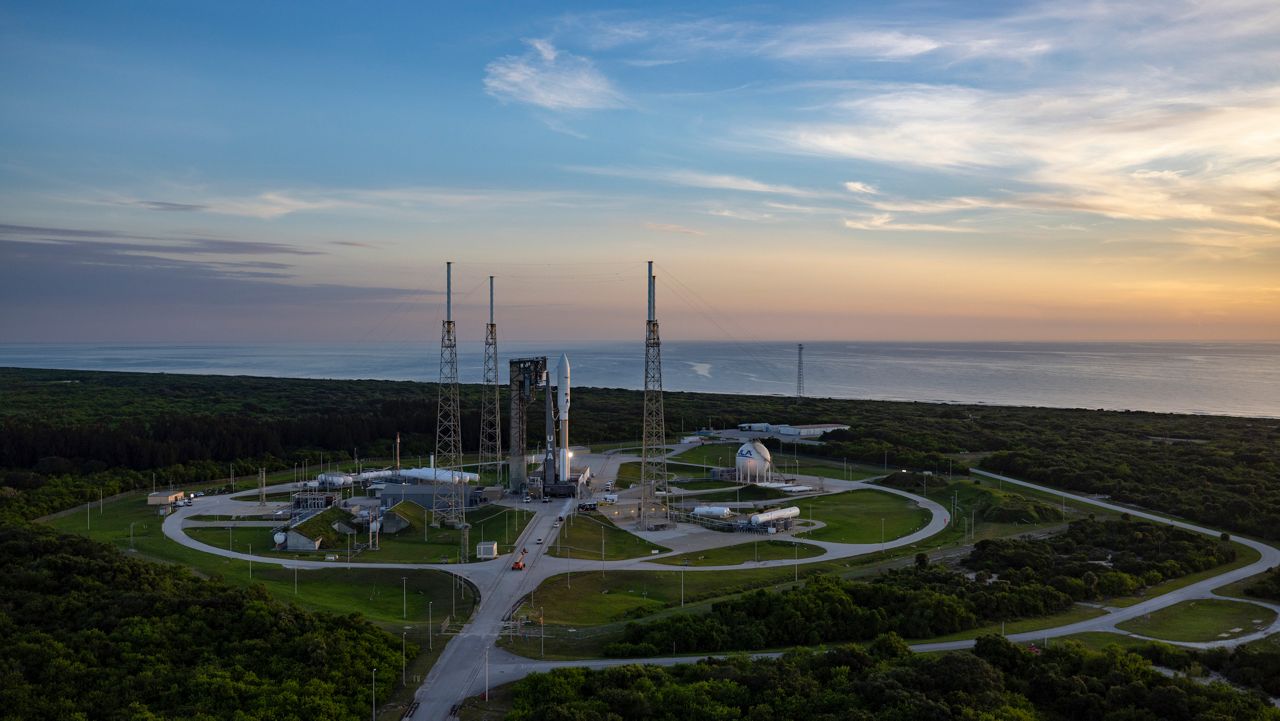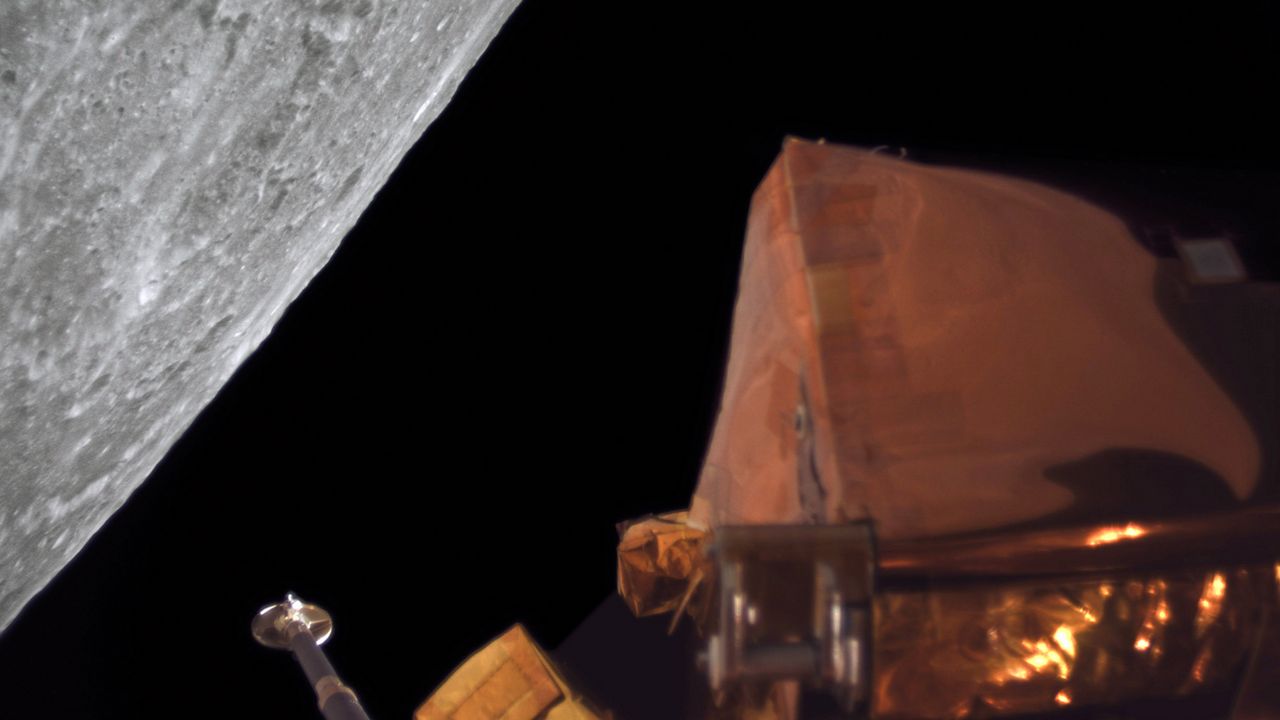KENNEDY SPACE CENTER — Despite a technical issue regarding the launch escape system, SpaceX was able to send up Axiom Space’s Ax-4 mission early Wednesday morning.
The four astronauts — three of whom will venture into the deep black for the first time — will head to the International Space Station, which is the fourth private mission by Axiom Space to the famed floating laboratory.
What You Need To Know
- The Ax-4 mission has seen a number of delays so far
- This is the fourth private mission to the ISS by Axiom Space
- The Axiom 4 mission was the first mission for the new and last Dragon capsule named Grace
- More than 60 experiments will be sent with the crew
- This will be the second Axiom Space mission where former NASA astronaut Peggy Whitson is the commander
- Get more space coverage here ▶
- 🔻Scroll down to watch former NASA astronaut Winston Scott talk space🔻
SpaceX’s Falcon 9 rocket and its crewed Dragon capsule sent up the Axiom Mission 4 (Ax-4) from Launch Complex 39A at the Kennedy Space Center, stated Axiom Space, SpaceX and NASA.
The bright flames from the powerful Merlin engines cut through the dark early morning sky like a knife as space fans cheered and car alarms went off like a bizarre parade.
Despite a technical issue regarding the launch escape system, @SpaceX was able to send up @Axiom_Space’s #Axiom4 mission early this morning.
— 🚀Anthony Leone🌕 (@AnthonyLeone) June 25, 2025
Check out my article at @MyNews13 to learn more: https://t.co/JaYHf3go0m#SpaceNews #Ax4 #ax4mission pic.twitter.com/z2520O7UKp
The launch happened at 2:31 a.m. ET, Wednesday.
The 45th Weather Squadron gave a 90% chance of good liftoff conditions, with the only concern being the cumulus cloud rule and the flight through precipitation.
If the launch is scrubbed, the next attempt would have been Thursday at 2:09 a.m. ET.
Starting a new trek
For the Ax-4 mission, it will be the maiden voyage for Dragon spacecraft that will carry the four; its temporary name is C213.
Cmdr. Peggy Whitson christen the new Dragon capsule Grace.
In fact, it is the last Crew Dragon capsule that SpaceX will build, as the company’s business model is to reuse its rockets and spacecraft. SpaceX has five Dragon capsules.
The first-stage Falcon 9 booster for this mission is named B1094. Before this launch, it has only had one other: The Starlink 12-10 mission.
The Falcon 9 landed at Landing Zone 1, which created a cracking sonic boom heard miles away.
The Dragon capsule is expected to dock with the International Space Station on Thursday at 7 a.m. ET for up to 14 days.
A technical issue and trying to launch
The early Wednesday morning launch had a technical issue that would have seen a possible scrub.
Mission control stated that it was trying to solve an issue connected with the launch escape system on the launch pad.
“Alright Peggy, we are trouble shooting an issue to uploading the current wind conditions to the vehicle. This must be completed before launch escape system is armed so the vehicle can correctly target offshore splashdown in the event of an escape,” stated a mission control official. “… If we do not successfully upload this to LES (launch escape system) arm, we will be no go for launch.”
But there was always an issue trying to get Ax-4 to launch. It was originally set to go up at 8:22 a.m. ET, Tuesday, June 10, but SpaceX posted on X, that high winds were the reason why the launch was pushed back.
The second attempt was Wednesday, June 11, but a liquid oxygen leak was discovered on the Falcon 9 following a static fire booster inspection.
Before a third launch attempt could take place, NASA and Axiom Space announced that they would be standing down from the Ax-4 launch due to leaks in the Russian section of the International Space Station, which is the Zvezda module.
A third attempt was set for Sunday, June 22, but was scrubbed due to concerns of the leaks on the space station and the repair work that was being conducted.
Spectrum News reached out to both NASA and Axiom Space about why the leak in Russia’s Zvezda module would be an issue since it is not near the Harmony module where the SpaceX Dragon capsule being used for the mission will be docked.
“The International Space Station is an interconnected system, so NASA and our partners are continuously mindful of all operational activities. Following a recent repair, we are taking some additional time to better understand the current configuration to determine whether any additional troubleshooting is necessary,” explained Joshua Finch of NASA’s Commercial Crew Resources’ Office of Communications to Spectrum News.
Starting a new trek
For the Ax-4 mission, it will be the maiden voyage for Dragon spacecraft that will carry the four; its name is C213.
In fact, it is the last Crew Dragon capsule that SpaceX will build, as the company’s business model is to reuse its rockets and spacecraft. SpaceX has five Dragon capsules.
The first-stage Falcon 9 booster for this mission is named B1094. Before this launch, it has only had one other: The Starlink 12-10 mission.
The Falcon 9 is expected to land at Landing Zone 1, so a sonic boom is expected to be heard.
The Dragon capsule is expected to dock with the International Space Station on Thursday at 7 a.m. ET for up to 14 days.
About the Ax-4 mission
This will be the fourth time the Texas-based Axiom Space has used SpaceX to send astronauts to the ISS. This will be another all-private human crewed mission from Axiom Space, where the four will stay on the floating laboratory for up to 14 days.
Late Tuesday night, Axiom Space's Co-Founder Kam Ghaffarian shared with Spectrum News why this fourth mission was special and how it shows that the international community comes together when it comes to scientific research.
Kam Ghaffarian, @Axiom_Space’s
— 🚀Anthony Leone🌕 (@AnthonyLeone) June 25, 2025
co-founder & executive chairman, was telling me why the #Ax4 mission reflects the growing cooperation within the international community.
He also talked about #AxiomStation that will replace the ISS.
See more @MyNews13:https://t.co/JaYHf3gVPU pic.twitter.com/pcV2KD9BFu
And the quartet will be busy for those two weeks as they bring more than 60 experiments with them.
Some of these experiments are in partnerships with private companies and space programs that include 31 countries.
Some of these research studies include:
- “How to support astronauts with insulin-dependent diabetes during short-duration missions in microgravity”
- “Examining microgravity's impact on the brain and cognitive risks”
- “Investigating the impacts of spaceflight on germination and growth of crop seeds”
- “Studying astronauts' mental and behavioral health on the International Space "Station”
- “Testing methods to extend pharmaceutical shelf-life in space”
- “Examining how space conditions affect human bacterial, viral, and fungal microbiomes”
- “Studying upper atmospheric thunderstorms”
Go here to learn more about the research being conducted during the Ax-4 mission.
Axiom Space's Chief Scientist Dr. Lucie Low shared more about some of the experiments that will be sent up to the International Space Station.
Dr. Lucie Low of @Axiom_Space shared with me some of the more than 60 experiments being launched during the #Ax4 mission and which one she is most interested in.
— 🚀Anthony Leone🌕 (@AnthonyLeone) June 25, 2025
Learn more about the mission in my @MyNews13 story: https://t.co/JaYHf3go0m pic.twitter.com/Lw0t2T1MMU
Retired NASA astronaut Winston Scott shared with Spectrum News about his thoughts on the Ax-4 mission and the future of commercial space.
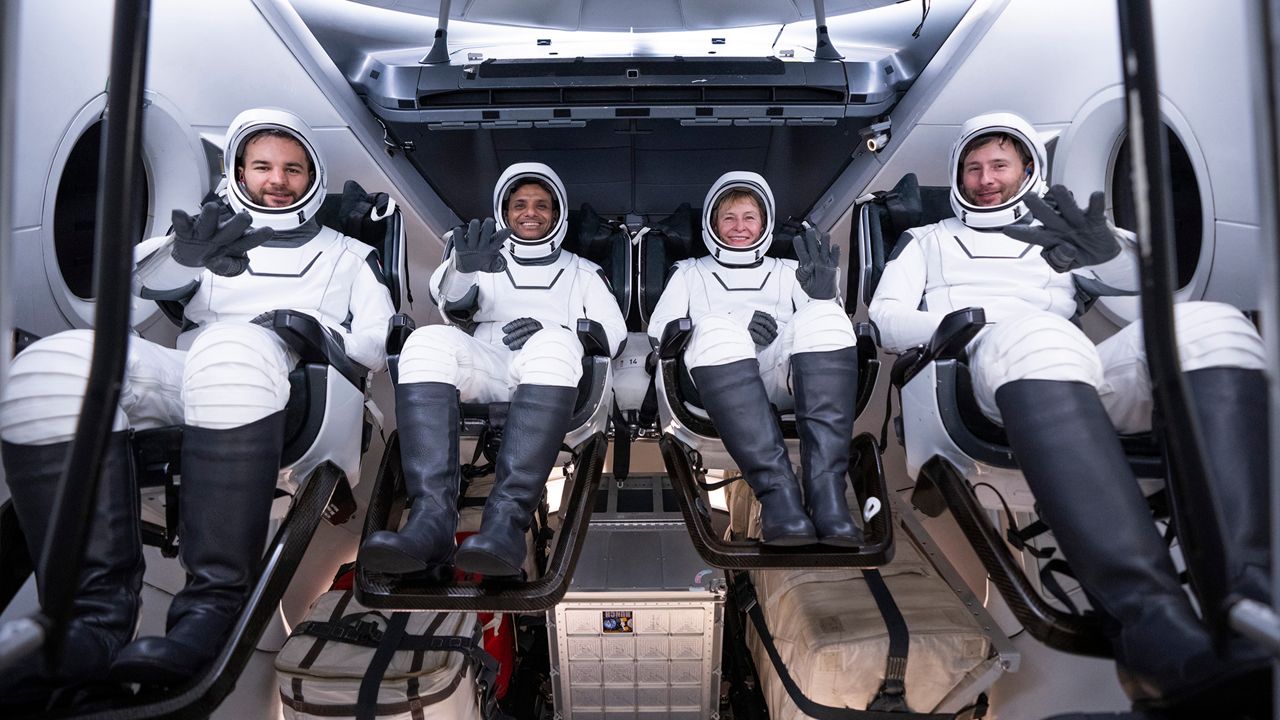
Meet the Ax-4 crew
The four astronauts — three of whom will venture into the deep black for the first time — have a diverse background.
“The Ax-4 crew includes members from India, Poland, and Hungary, marking each nation’s first mission to the space station in history and second government-sponsored human spaceflight mission in over 40 years,” explained Axiom Space.
Cmdr. Peggy Whitson: The former NASA astronaut became the first woman to command a private space assignment during the Ax-2 mission in 2023. She was recently inducted into the 2025 U.S. Astronaut Hall of Fame.
Adding up her mission time in her career, Whitson has spent 675 days, four hours and five minutes in space. She is a real space veteran while her three crew members will be first-timers for this mission.
Pilot Shubhanshu Shukla: A pilot for the Indian Air Force, he will be the second Indian Space Research Organization astronaut to go into space since 1984.
Mission specialist Sławosz Uznański-Wiśniewski: As a member of the European Space Agency, he is both a scientist and engineer. He will be the second Polish astronaut to go into space since 1978.
Mission specialist Tibor Kapu: He has studied mechanical engineering with a master’s degree specializing in polymer technology. He has dabbled in pharmaceutical industries and worked on the development of a hybrid car battery. He will be the second Hungarian astronaut since 1980 to go into space.


